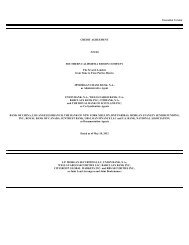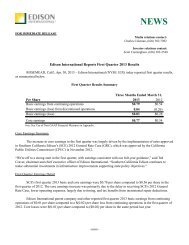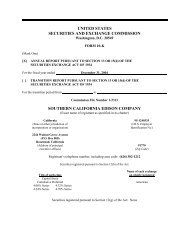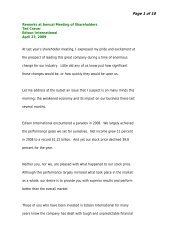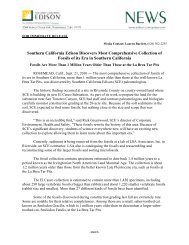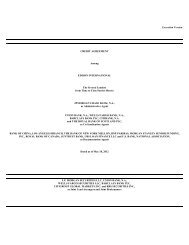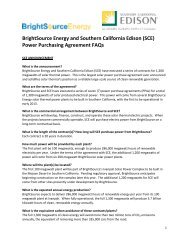10-Q - Edison International
10-Q - Edison International
10-Q - Edison International
You also want an ePaper? Increase the reach of your titles
YUMPU automatically turns print PDFs into web optimized ePapers that Google loves.
Contingent Features/Credit Related ExposureCertain derivative instruments and power procurement contracts under SCE's power and natural gas hedging activitiescontain collateral requirements. SCE has provided collateral in the form of cash and/or letters of credit for the benefit ofcounterparties. These requirements can vary depending upon the level of unsecured credit extended by counterparties,changes in market prices relative to contractual commitments and other factors.Certain of these power contracts contain a provision that requires SCE to maintain an investment grade credit rating fromeach of the major credit rating agencies, referred to as a credit-risk-related contingent feature. If SCE's credit rating were tofall below investment grade, SCE may be required to pay the derivative liability or post additional collateral. The aggregatefair value of all derivative liabilities with these credit-risk-related contingent features was $285 million and $216 million asof March 31, 2012 and December 31, 2011, respectively, for which SCE has posted no collateral to its counterparties, for therespective periods. If the credit-risk-related contingent features underlying these agreements were triggered on March 31,2012, SCE would be required to post $67 million of collateral.Counterparty Default Risk ExposureAs part of SCE's procurement activities, SCE contracts with a number of utilities, energy companies, financial institutions,and other companies, collectively referred to as counterparties. If a counterparty were to default on its contractual obligations,SCE could be exposed to potentially volatile spot markets for buying replacement power or selling excess power. In addition,SCE would be exposed to the risk of non-payment of accounts receivable, primarily related to sales of excess energy andrealized gains on derivative instruments. Substantially all of the contracts that SCE has executed with counterparties areeither entered into under SCE's procurement plan which has been pre-approved by the CPUC, or the contracts are approvedby the CPUC before becoming effective. As a result of regulatory recovery mechanisms, losses from non-performance are notexpected to affect earnings, but may temporarily affect cash flows.To manage credit risk, SCE looks at the risk of a potential default by counterparties. Credit risk is measured by the loss thatwould be incurred if counterparties failed to perform pursuant to the terms of their contractual obligations. To mitigate creditrisk from counterparties, master netting agreements are used whenever possible and counterparties may be required to pledgecollateral when deemed necessary.Margin and Collateral DepositsMargin and collateral deposits include cash deposited with counterparties and brokers as credit support under energycontracts. The amount of margin and collateral deposits generally varies based on changes in the fair value of the relatedpositions. SCE nets counterparty receivables and payables where balances exist under master netting agreements. SCEpresents the portion of its margin and collateral deposits netted with its derivative positions on its consolidated balancesheets. The following table summarizes margin and collateral deposits provided to counterparties:(in millions)Collateral provided to counterparties:March 31,2012December 31,2011Offset against derivative liabilities $ 81 $ 51Reflected in other current assets 20 1714



